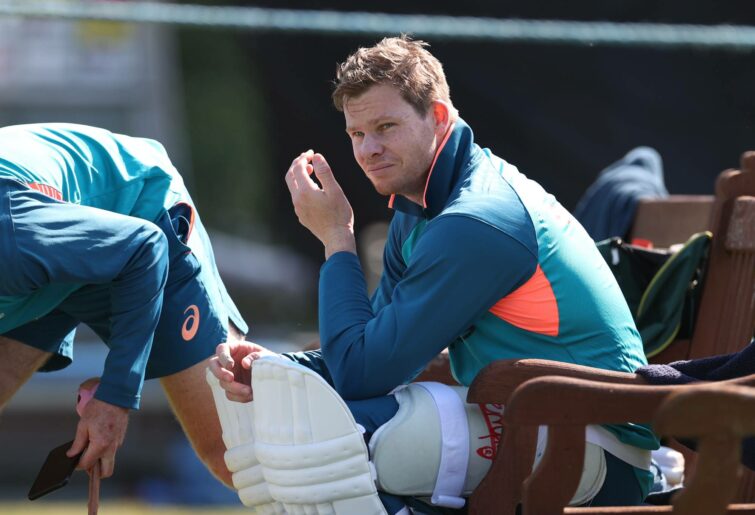The final stand: How Steve Smith’s shift to opener exposes the Australian cricket team’s twilight era

Sydney. SCG. The sixth of January. An enthralling New Years test drew to a close as Australia flexed their muscles on the final two days to defeat a spirited Pakistani side. Departing test opener David Warner rolled back the years and delivered a swashbuckling innings that secured a comprehensive victory in front of an admiring Sydney crowd.
For many fans, it capped off a comprehensive series victory in the sunshine whilst bidding farewell to a pioneer of the game. For some, however, many turned to an old but rather imposing elephant in the room of Australian cricket: the elusive opening spot, and who would be given such monumental shoes to fill? Debates were extensive between friends, colleagues and families as the summer test series loomed, with Warner announcing that he would don the baggy green for the final time at the Sydney Cricket Ground, a full-circle finish to an esteemed playing career.
As a result, many cricketing nuffies cast their eyes to the warm-up match played between the Prime Minister’s XI and Pakistan on the 6th of December, the former of which contained three primary candidates for Warner’s replacement: Cameron Bancroft, Matthew Renshaw and Marcus Harris.
All of whom had experience within the Australian test lineup, and had been stalwarts within their respective Sheffield Shield sides for the previous two calendar years. As the game concluded, it was Renshaw that rose above the rest, with a calculated and patient 136* off 337 balls, and an innings one would think would hold great weight in the lead-up to the West Indies’ squad announcement on the 10th of January.
However, in an announcement as bizarre as Colin Miller’s hairstyle, batting heavyweight Steve Smith put his hand up to partner Usman Khawaja at the top of the order, casting a tidal wave of disappointment across many of Australia’s new opening candidates.
Join the stars from rugby league, AFL, Test cricket, BBL and more at An Evening with Tom Brady.
Many greeted this news with scepticism, however, as they wondered why the acclaimed ‘best since Bradman’ would move from his regimented No.4 position, where he had amounted an astounding average of 61.5, and a tidy 19 hundreds to boot. Was it always a desire of Smith to front up against a brand new Kookaburra, or was it time for a new challenge as, like many of the Australian side, they entered the twilight of their decorated careers?
The Australian side, albeit an established and ruthless cricketing unit, signals retirement and rebuild imminently. With the average age of the SCG test XI against Pakistan standing at 33 years and 4 months, many hypothesise that Warner’s retirement will be the first cab off the Australian rank in the inevitable carousel that is professional cricket.
(Photo by Ryan Pierse/Getty Images)
Despite signalling no intention of hanging up his spikes anytime soon, journalists have pondered whether Steve Smith will join his former New South Wales compatriot Warner since the end of the enthralling 2023 Ashes campaign, when many greats, including former England captain Michael Vaughan, thought that Smith would call stumps on his career.
While we have no verbal allusion to Smith’s retirement, his internal transfer to the top of the Australian order suggests a last hurrah to fulfil ‘a new challenge’. This move to the opening slot has indirectly opened the door for young gun Cameron Green to take up the decorated No.4 spot within a slightly new-look Australian side, as was confirmed by chief of selectors George Bailey after the West Indies squad announcement ahead of the first Test.
At the same time, Renshaw rose to the top, as he was included in a 13-man squad that alluded to a slow but calculated ‘new era’ for Australian cricket, but would not feature in the XI to take the field.
However, as one position seems to be sorted, there are many other questions that surround replacement. Usman Khawaja, despite surmounting the highest amount of test match runs scored in 2023, also lingers on retirement at the age of 37, as does Mitchell Starc and Nathan Lyon, who are 34 and 36 respectively.
To make matters more dubious for fans, test match experience is few and far between for Sheffield Shield players, with only six players having been given a baggy green since the 2021/2022 Ashes campaign, one of which being a covid replacement for the affected Pat Cummins, and three being involved as second and third spin options on subcontinental tours.
(Photo by Jason McCawley – CA/Cricket Australia via Getty Images)
From a cricket fan’s perspective, the outlook is somewhat bleak. Despite a squad that will sit at the apex of Test cricket for a short while, the imminent retirement of many leaves obvious holes in various key areas of this current Aussie setup. Whilst talent is undoubtedly present, the lack of test match experience will be a huge challenge for captain Cummins and the coaching staff when moving the eventual new playing group forward.
Sports opinion delivered daily
Many Australian supporters fear the fallout from the ‘golden generation’ retirement era, and with a rich history of cricketing prowess, will the lack of variety in the squad fail to guarantee long-term success? As the core of the squad enter their final years in a baggy green, the silence surrounding this question is deafening.
